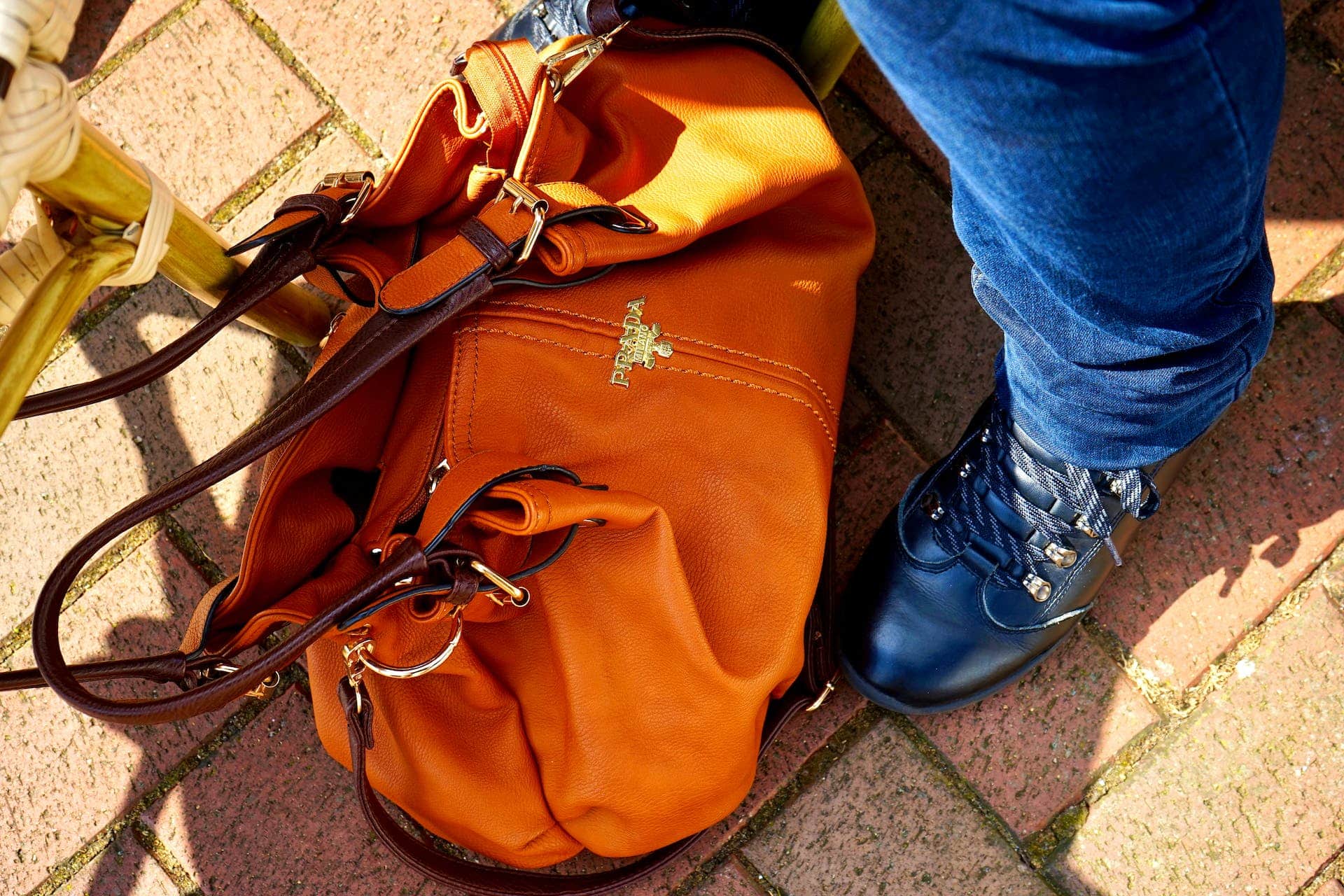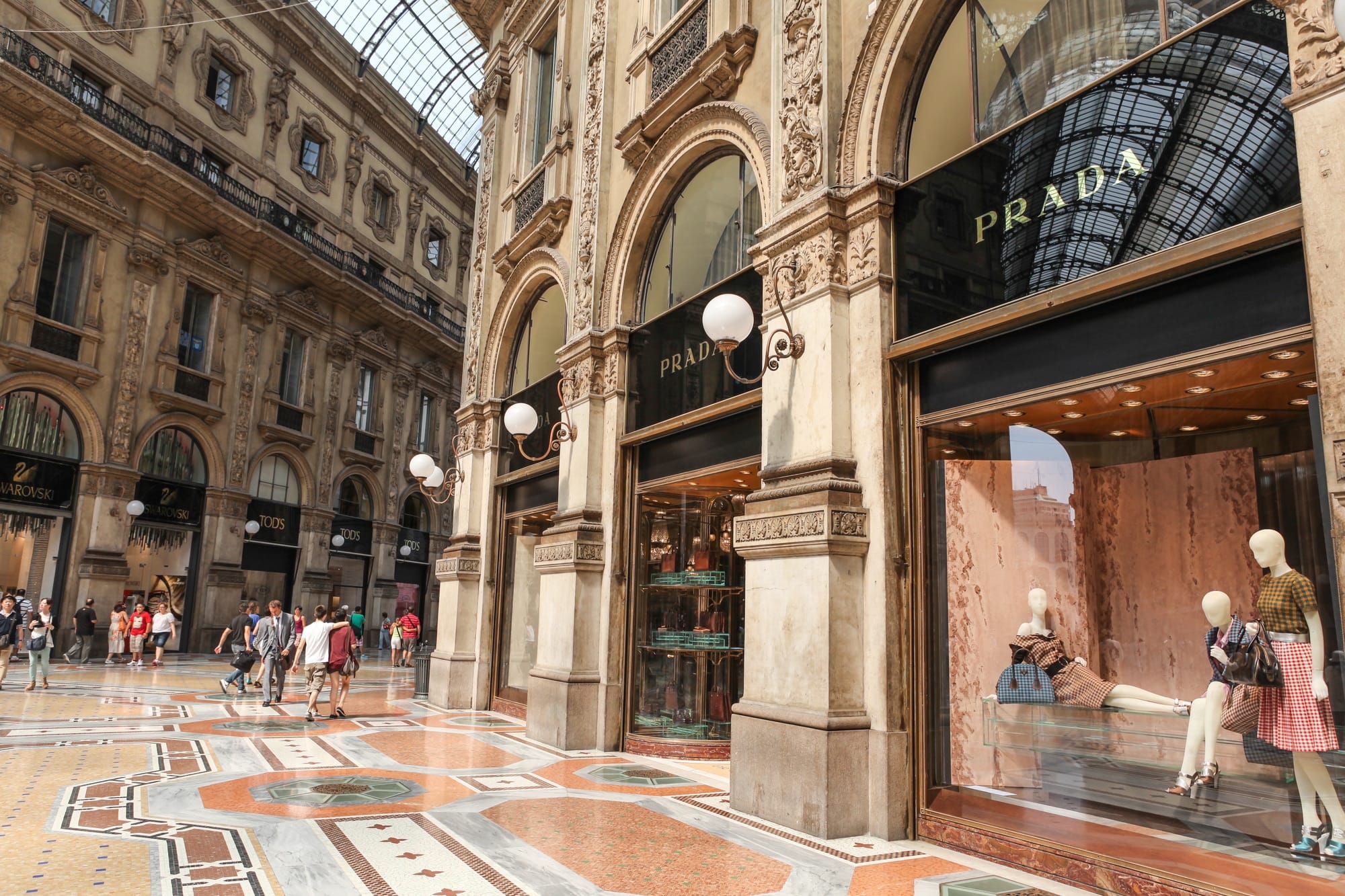What does the devil wear? Prada! Yes, you got that right! It was an amazing movie, but today, we are not going to discuss that movie here. However, we will definitely discuss Prada.
Prada is a well-known luxury fashion brand. It manufactures clothes, handbags, accessories, perfumes, and whatnot. Besides the devil, everyone wants to wear Prada.
Prada manufactures very high-quality products. However, that's not the only reason why people shop from there.
Prada has also impacted the market by launching some of the most expensive products, which makes many people want to wear Prada as a status symbol.
You might be curious why we are discussing Prada today. Well, the reason is obvious. Today, we will conduct a Prada PESTLE Analysis to see how external factors impact Prada's operations, which will accompany our SWOT Analysis of Prada.
Before proceeding with the PESTLE Analysis, let's take a quick look at the history of Prada so that we know how the brand originated and evolved over the years.

Prada is an Italian fashion brand. It was founded by Mario Prada in 1913. Initially, it was a small store selling classy leather products such as bags, trunks, and other accessories.
The shop was named "Fratelli Prada," which means Prada brothers since it was more of a family business. Over the years, Prada's customer base has increased since the brand started selling high-quality products.
The brand operated as a family business until Mario Prada's granddaughter took over in the 1970s. She revolutionized the brand completely with her creative ideas.
In the 1980s, Prada launched black nylon backpacks, which were loved by the masses. People loved the brand's idea of mixing luxury with minimalism. Moreover, this was Prada's first product that wasn't made out of leather.
Prada expanded its portfolio by launching a clothing line for women in the coming years. Due to this move, Prada managed to capture more market share. Besides that, Prada also launched a sister clothing brand named Miu Miu that targeted youth with its playful designs.
Prada dominated the fashion industry in the late 90s and early 2000s with its minimalist and luxurious designs. The brand's popularity soared higher when celebrities across the globe started endorsing the brand.
As the brand became more popular, it decided to go public in 2001 to adopt the expansionary policy. Over the years, Prada diversified its operations by jumping into various industries.
It also acquired famous fashion brands such as Car Shoe and Church's. Prada offers footwear, handbags, accessories, fragrances, activewear, and a clothing line.
Besides attracting customers through the quality of its products, Prada also focused on designing cool stores that people would want to visit. Moreover, the fashion brand also spends significant money each year on advertising to increase its customer base.
In 2022, Prada spent 8.5% of its revenue on advertisements to stay ahead of its competitors, like Burberry, Gucci, Ralph Lauren, and Louis Vuitton. Prada is one of the biggest and most iconic fashion brands in the fashion industry. It has a customer base in almost every part of the world.
Prada operates in almost 70 countries. It has 635 stores across the globe. In 2022, the brand managed to generate revenue of 3.7 billion Euros.
Now that we have discussed the history and the current operations of Prada let's proceed further and discuss what PESTLE analysis is. PESTLE analysis is a tool businesses use to examine the impact of the external environment on the business.
PEST Analysis highlights how different political, social, environmental, legal, technological, and economic factors impact the operations of a business.
Now that we know what PESTLE Analysis is let's proceed further and look at how various external factors impact Prada.
Political Factors That Affect Prada
Political factors are related to the political environment and the government policies. Political factors impact every business. In this section, we will look at how different political factors impact Prada's operations.
Government regulations have a significant impact on Prada's operations. The import and export policies imposed by the government affect Prada.
For example, suppose the government imposes a ban on the import of the raw materials that Prada uses to manufacture its products. In that case, Prada will be in trouble.
Similarly, suppose the government decides to ban the export of luxurious fashion products. In that case, Prada's sales overseas will drop, and the brand will suffer.
Besides that, the political instability also impacts Prada. If Prada operates in a country undergoing political instability, people would be reluctant to purchase luxury products due to uncertainty. As a result, Prada sales will fall.
Furthermore, the government's tax policies also have a significant impact on Prada's operations. If the government decides to impose heavy taxes on the fashion industry, Prada's profits will shrink. Hence, such tax policies would hurt Prada.
Moreover, political tensions between countries can also impact Prada negatively. For example, Prada has suspended its operations in Russia due to the Russia-Ukraine conflict.

Economic Factors That Affect Prada
Economic factors are related to the domestic and global economy. In this section, we will look at how different economic factors impact Prada's operations.
Interest rates in the economy impact Prada significantly. Businesses borrow money from banks to expand their operations. However, when the interest rates rise, the borrowing cost increases, which makes businesses reluctant to borrow.
Similarly, high interest rates discourage Prada from borrowing money from the banks due to the high cost of borrowing. As a result, the fashion brand has to stop its expansionary projects when the interest rates are high.
Other than that, inflation also impacts Prada's operations. When inflation is high in the economy, the disposable income of the consumers falls. Due to this, many consumers restrict their spending.
As a result, Prada's sales drop during high inflation since people prefer to save money and speed only on necessary products.
Besides that, economic recessions also caused Prada sales to drop. When there is an economic recession, people's purchasing power falls. Hence, few people can afford to spend on luxury products. As a result, during economic recessions, Prada's profits will fall, and the brand will suffer.

Social Factors That Affect Prada
Social factors account for the social and cultural factors that impact the operations of a business. Let's take a look at how different social factors impact Prada's operations.
Consumer behavior has a great impact on Prada's operations. Consumer preferences and tastes can change very quickly, which can affect Prada sales. To overcome this problem, Prada has to be very responsive and sensitive to the change in trends.
Moreover, the demographics of the society where Prada is operating impact Prada significantly.
Suppose a majority of the people in a society have low incomes. In that case, very few people will be able to afford Prada. Hence, if Prada operates in such a society, it won't be able to make huge profits.
Similarly, the average age of the society also impacts the sales of Prada. Suppose a society has a high percentage of young people. In that case, the demand for Prada in such a society will likely be high.
Furthermore, the values of society also impact Prada's operations. In some societies, wearing expensive clothes or possessing expensive accessories isn't good. The demand for Prada products will be less in such societies.
Technological Factors That Affect Prada
Technological factors are the factors that account for how technology and innovation impact businesses. In this section, we will look at how different technological factors impact Prada.
E-commerce and online shopping platforms have allowed Prada to increase its customer base and sell more. Prada has an online store.
It provides Prada an opportunity to increase its customer base without opening a physical store. By using E-commerce, Prada can minimize its operational costs and maximize its profits.
Moreover, businesses now have more avenues to advertise their products. Social media platforms such as Facebook, Instagram, and Twitter allow brands to market themselves in an organized way.
These platforms allow Prada to market itself and advertise its products. Besides that, Prada also has an opportunity to improve its customer service by interacting with the customers. The emergence of social media platforms has positively impacted Prada's operations.
Other than that, data analytics software has emerged recently, which enables businesses to analyze the trends in their data. Prada can use data analytics to identify its potential audience and make well-informed decisions.
Legal Factors That Affect Prada
Legal factors are the factors related to the laws and the legal framework that impact the operations of businesses. Let's proceed and look at how different legal factors impact Prada's operations.
Intellectual property laws protect Prada. According to this law, no other brand can copy the logos, designs, and fashion brand's name.
This law prohibits brands from making counterfeit Prada products. Hence, intellectual property laws have a positive impact on Prada's operations.
Moreover, labor laws also affect Prada. The fashion brand must ensure that all its employees are treated equally and paid above the minimum wage rate. If Prada doesn't follow labor laws, the fashion brand will be liable to pay heavy fines.
Other than that, antitrust laws also impact Prada significantly. The fashion brand needs to stay vigilant and shouldn't get involved in any practice that inhibits competition in the market, or else Prada would be forced to pay penalties.
Furthermore, data protection laws also impact Prada's operations. The fashion brand has to ensure that the data of its users is fully secured. In case of any data breaches, the brand can face lawsuits.

Environmental Factors That Affect Prada
Environmental factors are the factors that are related to the natural environment. In this section of the PESTLE analysis, we will discuss how various environmental factors impact Prada.
The depletion of natural resources has a significant impact on the fashion industry. Famous fashion brands like Prada require natural resources such as water and cotton to manufacture their products.
However, due to the depletion of these resources, Prada's production cost is increasing, and its profits are shrinking.
Moreover, fashion brands use dyes and other chemicals during the manufacturing process. Later, these chemicals are discarded in the environment due to which causes the plant to suffer.
Over the years, environmentalists have been vocal about this issue, due to which Prada filters its waste before discarding it into the environment. However, the filtration process has cost Prada a lot of money.
Other than that, the frequency of natural disasters has increased due to global warming. Natural calamities can damage Prada's infrastructure, such as its manufacturing plants and stores, which will cost Prada financially.
PESTLE Analysis of Prada: Final Word
Prada is one of the world's biggest and most expensive fashion brands. It has stores in more than 70 countries, generating huge sums of revenue. Prada is an Italian fashion brand.
Prada was established by a man named Mario Prada in 1913.
The brand initially offered leather-made bags. Over the years, the brand gained popularity and diversified its portfolio.
In today's article, we conducted a PESTLE analysis of Prada to see what external factors impact the brand's operations.
The PESTLE analysis framework highlighted how various external factors impact the fashion brand. If you enjoyed reading this article and want to know more about PESTLE analysis, take a look at some examples of the PESTLE analysis.










